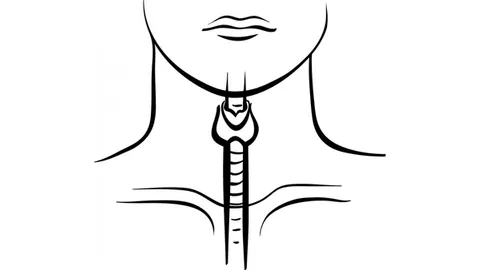
Breakthrough in Anaplastic Thyroid Cancer Treatment: Checkpoint Inhibition and Targeted Therapy Show Promise!
2024-11-08
Author: Wei Ling
Overview
Recent findings from a phase 2 clinical trial (NCT03181100) reveal a groundbreaking combination of atezolizumab (Tecentriq) with targeted therapy, leading to a significantly improved median overall survival (OS) in patients suffering from anaplastic thyroid cancer. This exciting development suggests a new frontier in cancer treatment that could change lives.
Challenges with Targeted Therapy
Despite the initial success of BRAF and MEK inhibitors in treating patients with the BRAF mutation, resistance to targeted therapies is a significant hurdle. Researchers recognized that while these tumors possess oncogenic driver mutations, they evolve in ways that render monotherapy increasingly ineffective. Consequently, the trial was designed as an innovative approach, merging checkpoint inhibition with targeted therapy to enhance patient outcomes.
Trial Overview and Patient Cohorts
The study involved 42 patients, each stratified into genetically matched cohorts based on their mutations: BRAF V600E variants, RAS or NF variants, and non-BRAF/RAS/NF variants. Each patient received atezolizumab alongside a specific targeted therapy tailored to their genetic profile. For those with the BRAF V600E variant, treatment included the BRAF inhibitor vemurafenib (Zelboraf) and the MEK inhibitor cobimetinib (Cotellic). Patients with RAS/NF mutations received cobimetinib alone, while those without these mutations were treated with the VEGF inhibitor bevacizumab (Avastin).
Key Findings from the Study
After a median follow-up of nearly 19 months, the overall median OS for all patients reached an encouraging 18.23 months. Notably, patients in the BRAF V600E cohort enjoyed a median OS of 43.24 months, presenting a stark contrast to the 6.21 months observed in the non-BRAF/RAS/NF cohort. The overall response rate across all groups was 31%, with the BRAF cohort showing a remarkable 50% response. Impressively, one patient achieved a complete response, and a total of 12 patients saw their locoregional tumors become resectable due to the treatment.
PD-L1 Expression Insights
Further analyses of PD-L1 expression offered intriguing insights. Out of 30 patients with available tissue samples, 90% displayed a PD-L1 expression of 5% or greater. However, the expected correlation between high PD-L1 expression and improved OS was not observed overall. Interestingly, patients with less than 5% PD-L1 expression tended to experience faster disease progression, highlighting potential avenues for future study.
Safety Profile of the Treatment
While the combination therapy showed promise, safety is a critical component of any cancer treatment. In cohort 1, there was one reported patient death due to colonic perforation, which may be linked to the immunotherapy. Adverse events included various grades of colitis, pancreatitis, and other complications, which were generally in line with expectations for the treatment regimens used. Close monitoring and management of these side effects will be crucial as this therapy moves forward.
The Future of Anaplastic Thyroid Cancer Treatment
These exciting results underscore the potential for checkpoint inhibition and targeted therapies to transform the management of anaplastic thyroid cancer. As ongoing research continues, the medical community is optimistic about refining these treatment strategies, ultimately providing patients with more effective options to combat this aggressive cancer. It’s more crucial than ever for patients and families battling thyroid cancer to stay informed and discuss these developments with their healthcare providers.
This is just the beginning — stay tuned for the next big breakthrough in cancer treatment!




 Brasil (PT)
Brasil (PT)
 Canada (EN)
Canada (EN)
 Chile (ES)
Chile (ES)
 Česko (CS)
Česko (CS)
 대한민국 (KO)
대한민국 (KO)
 España (ES)
España (ES)
 France (FR)
France (FR)
 Hong Kong (EN)
Hong Kong (EN)
 Italia (IT)
Italia (IT)
 日本 (JA)
日本 (JA)
 Magyarország (HU)
Magyarország (HU)
 Norge (NO)
Norge (NO)
 Polska (PL)
Polska (PL)
 Schweiz (DE)
Schweiz (DE)
 Singapore (EN)
Singapore (EN)
 Sverige (SV)
Sverige (SV)
 Suomi (FI)
Suomi (FI)
 Türkiye (TR)
Türkiye (TR)
 الإمارات العربية المتحدة (AR)
الإمارات العربية المتحدة (AR)